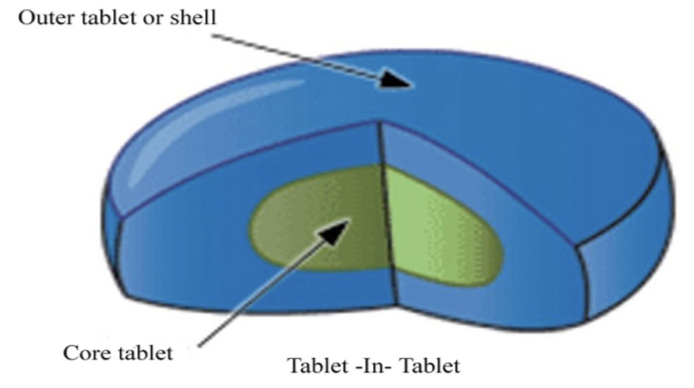Review on Tablet in Tablet techniques

Among all available dosage form, tablet is most widely used because of its stability and patient acceptability. The better aesthetic quality like color, texture, mouth feel, and taste masking depended on film and sugar coatings, so the coating is an important part in the formulation of the tablet. The present work aims to comprehensively review the formulation, characterization, and challenges in the development of Tablet in Tablet dosage form.
Main text: Film and sugar coatings have the number of disadvantages; most important one is the utilization of aqueous or organic solvent that leads to toxicity. To overcome this problem in the year 1896, Noyes firstly introduced the compression coating or Tablet in Tablet technique. In the development of Tablet in Tablet dosage form, substantial attention among researchers and various research reports and patents inputs can be found in the literature. Also, we focused on the recent advancements in techniques like one-step dry-coating (OSDrC®) for manufacturing Tablet in Tablet dosage form.
Conclusion: The current review gathered information on the latest patent, formulation, advantages, and disadvantages of Tablet in Tablet or compression coating. The review also elaborates on the importance of Tablet in Tablet techniques in the development of a modified release system. Download the full springer.com publication here: Review on Tablet in Tablet techniques

